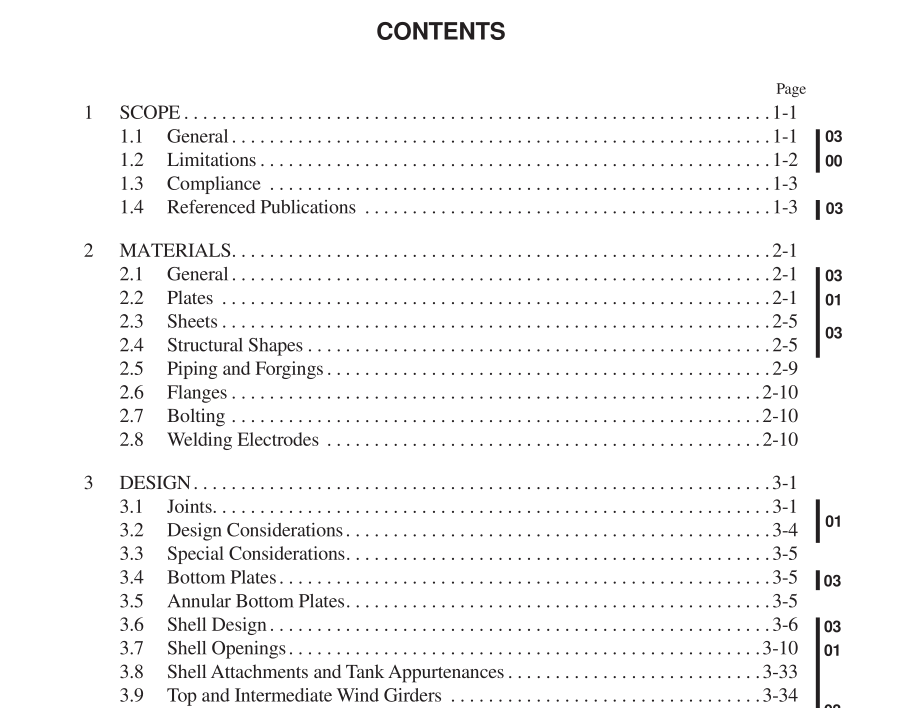API RP 945 pdf download

API RP 945 pdf download.Avoiding Environmental Cracking in Amine Units
1 Scope
This recommended practice discusses environmental cracking problems of carbon steel equipment in amine units. Stress corrosion cracking of stainless steels in amine units is beyond the scope of this document although there have been isolated reports of such problems. This practice does provide guidelines for carbon steel construction materials including their fabrication, inspection, and repair to help assure safe and reliable operation. The steels referred to in this document are deÞned by the ASTM designation system, or are equivalent materials contained in other recognized codes or standards. Welded construction is considered the primary method of fab- ricating and joining amine unit equipment. See 3.1 and 3.2 for the deÞnitions of weld and weldment. This document is based on current engineering practices and insights from recent industry experience. Older amine units may not conform exactly to the information contained in this recommended practice, but this does not imply that such units are operating in an unsafe or unreliable manner. No two amine units are alike, and the need to modify a speciÞc facility depends on its operating, inspection, and maintenance history. Each user company is responsible for safe and reli- able unit operation.
4 Background
4.1 AMINE UNITS In reÞneries and petrochemical plants, gas and liquid hydro- carbon streams can contain acidic components such as hydro- gen sulÞde (H 2 S) and carbon dioxide (CO 2 ). Amine units operating at low and high pressures are used to remove such acidic components from process streams through contact with, and absorption by, an aqueous amine solution. Figure 1 is a process ßow diagram for a representative unit. The gas or liq- uid streams containing one or both of the acidic components are fed to the bottom of a gas-absorber tower or liquid-contac- tor vessel, respectively. The lean (regenerated) amine solution ßows counter to the contaminated hydrocarbon streams in the tower and absorbs the acidic components during the process. The puriÞed gas or liquid stream passes to the overhead sys- tem. The rich (contaminated) amine solution is fed to a regen- erator (stripper) tower, where the acidic components are removed by pressure reduction and by the heat supplied from a reboiler. The acidic components are removed overhead and sent to an incinerator, sulfur removal plant, or another process- ing operation. The lean amine solution that leaves the bottom of the regenerator is returned to the absorber or contactor to be used again for puriÞcation of the hydrocarbon streams. Various types of water-soluble amines have been developed for the puriÞcation of process streams. The most commonly used amines are aqueous solutions of monoethanolamine (MEA) and diethanolamine (DEA). Other amines, such as methyldiethanolamine (MDEA), diisopropanolamine (DIPA), and diglycolamine (DGA), are also used in various treating processes.
4.2.2 Environmental Cracking
Problems with environmental cracking occur when carbon steels are in regions of high hardness, high residual stress, or both. In particular, areas of high hardness in and adjacent to welds have been problematic. Cracks have also been reported in areas where high hardness levels were not detectable with standard Þeld hardnessÐmeasurement equipment. The crack- ing of weld-repaired areas has also caused serious problems when excessively hard zones or regions of high residual stresses have not been eliminated by the repair procedure. In some instances, cracking has occurred in base metal at sites of internal arc strikes, or opposite external welds for vessel attachments, such as ladders. Four different cracking mechanisms have been identiÞed in carbon steel components in amine units: a. SulÞde stress cracking (SSC). b. Hydrogen-induced cracking (HIC) associated with hydro- gen blistering. c. Stress-oriented hydrogen-induced cracking (SOHIC). d. Alkaline stress corrosion cracking (ASCC).









